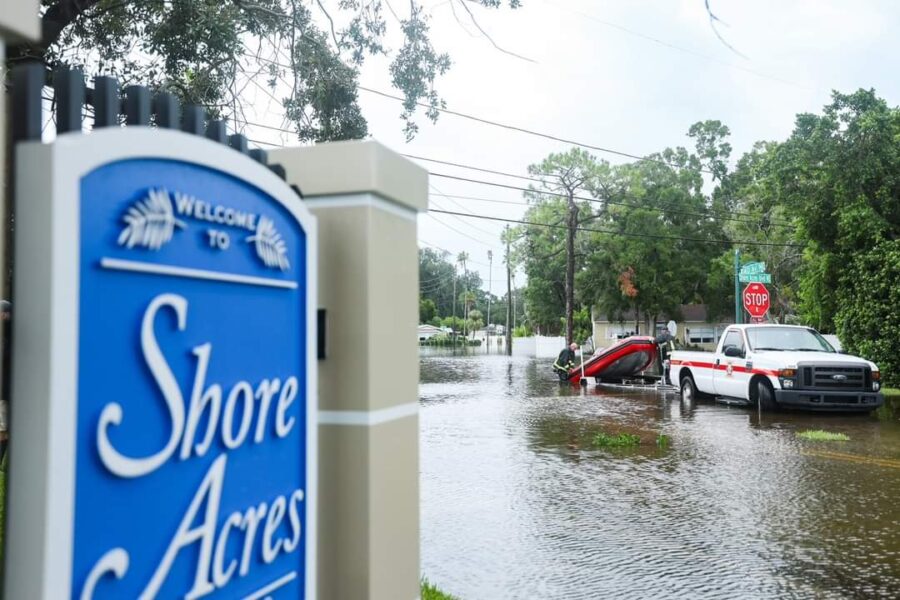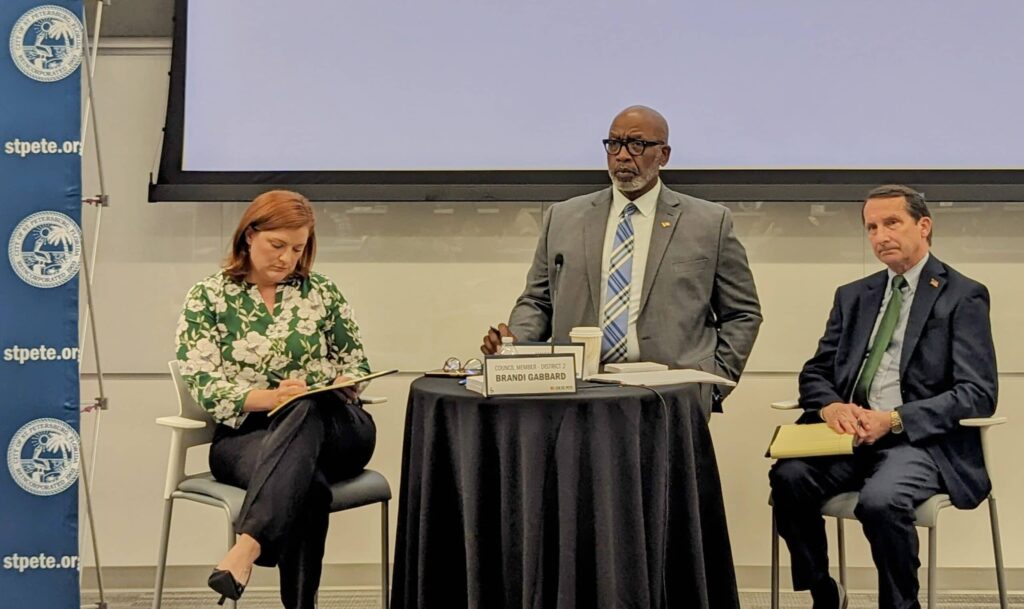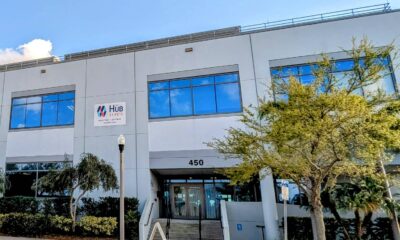Thrive
Council dedicates $3.75 million to flood prevention systems

Several St. Petersburg residents decried a lack of functioning tidal backflow prevention valves at the Feb. 13 Resilience Community Listening Session; plans to install more efficient devices are now progressing.
A contractor will soon begin replacing 14 outdated backflow preventers, which keep coastal waters from inundating drainage systems amid increasingly frequent and severe high tides. The city council unanimously approved accepting Edmonton, Canada-based PCL Construction’s maximum price proposal of $3.75 million last Thursday (Feb. 29).
The vote followed a Flood Awareness Week proclamation and officials recognizing the city’s new floodplain manager. Claude Tankersley, public works administrator, called that a “happy coincidence.”
Tankersley said he intended to present the project for approval at the April 4 council meeting. “However, after the Resilience Community Listening Session two weeks ago, we decided not to wait to bring it to you,” he added.
“Administration believes this project is a vital first step in addressing the feedback we received from the public at the Community Resilience Listening Session,” Tankersley said. “We thank you for allowing us … through the accelerated process to bring it to council today.”
City officials will dedicate $746,568 to replacing 14 backflow preventers in flood-prone Shore Acres. Over 1,200 of the neighborhood’s 2,863 homes flooded when Hurricane Idalia passed 100 miles offshore in August 2023.
At the listening session, Kevin Batdorf, president of the Shore Acres Civic Association, said water overtakes area roads “every other day. Where was this money for the past 10 years – for the past five years,” he asked.

From left: Councilmember Brandi Gabbard, Mayor Ken Welch and Councilmember Ed Montanari hear residents’ concerns at the Feb. 13 Resilience Community Listening Session. Photo by Mark Parker.
The remaining $3 million allocated Feb. 29 will go towards evaluating and replacing up to 56 backflow systems at critical locations throughout the city. City documents state the “proactive measure” ensures administrators can expand the project’s scope to “comprehensively address” flood risks and further enhance community resiliency.
Tankersley credited Dan Saunders, a senior engineer for 49 years, for launching many of the city’s current stormwater initiatives. Saunders, who died unexpectedly in January 2023, oversaw installation of current backflow preventers from 2005 through 2014.
Tankersley said the city began utilizing backflow preventers 40 years ago and now uses “third generation” devices. Saunders started planning to replace those with more efficient, technologically advanced systems in 2022.
“This is great news,” said Councilmember Ed Montanari, who represents Shore Acres. “I know the technology keeps getting better and better.”
Montanari noted that Shore Acres was built atop marshland in the 1920s, before current elevation standards. He said it is the city’s lowest-lying neighborhood.
Councilmember Brandi Gabbard represents the similarly low-lying and flood-prone Riviera Bay neighborhood. At the listening session, she said former elected officials “who took pride in keeping rates low, sacrificed and under-invested in maintenance and operations.”
“Since 2016, our city has been playing catch-up to the tune of hundreds of millions of dollars,” she told attendees. Gabbard, who also chairs the Tampa Bay Regional Resiliency Coalition, noted Thursday that replacing backflow preventers was “something in the works for quite a while.”
“I want it to be mentioned that this didn’t just come out of the Resiliency Listening Session, even though maybe you escalated it a bit because of that,” Gabbard added. “It is not a knee-jerk response.
“This is just the beginning of the work, and I know you all are committed to seeing that through.”
City officials will release a Stormwater Master Plan this year. The long-awaited initiative recommends at least $760 million in projects.








Michael C Russo
March 13, 2024at4:43 pm
Once again residents at Placido Bay NE and 37th Ave NE nearby Crisp Park have 5 storm drains that empty out the bay waters onto our streets during hurricane weather.
We need to have those back-flow valves installed to slow the flood waters from our streets, yards and houses. Folks, children included are seen walking and biking in these waters despite downed power lines. Its a filthy mess especially if sewage has recently entered those very same waters.
Rachelle Roach
March 5, 2024at6:37 pm
Why is EVERYTHING ALWAYS REACTIVE instead of PROACTIVE? Why?
I hope that the people of Shore Acres are represented by competent legal counse! Someone like Dan Perry from Orlando who has helped our community- a lot! 407-894-9003.
I’m praying this will be resolved soon- with the upcoming storms— always— looming—
Bill Herrmann
March 5, 2024at10:20 am
Another band-aid fix.
.
Yes, these actions will stop the water coming OUT of the storm drains. From experience these devices will work for a few years until the check valves get fouled by barnacles or are damaged by wave action or manatees. What is needed is a better understanding of all the root cases behind the flooding.
.
While sea level rise is irrefutable. A fast search will show that sea level has risen only 6-8 inches in the last 100 years. So why are we flooding???? Let’s start by looking at the geography. Tampa Bay is an enclosed body of water. Water only exits on the out-going tide.
If one paves over 30 acres in Ruskin, the rainfall run-off goes into the bay and waits for the next low tide to leave.
.
What is needed is a proper study by competent hydrologists of the entire Tampa Bay Watershed. Notably evaluating the impact of development on water levels. In the short-term salinity meters located from Sparkman Channel in Tampa, along the various channels, down to the Skyway Bridge would show the amount of urban run-off entering the bay.
Until we understand why there is 2’ of flooding from 6” of sea rise, we will continue to treat the symptom versus the root cause.
Steven Brady
March 4, 2024at4:15 pm
Why should people who didn’t build or buy in a known flood zone subsidize people and developers who knowingly did?
It seems fairly unreasonable to me.
Why not instead create a special tax district for these people to bail themselves out?